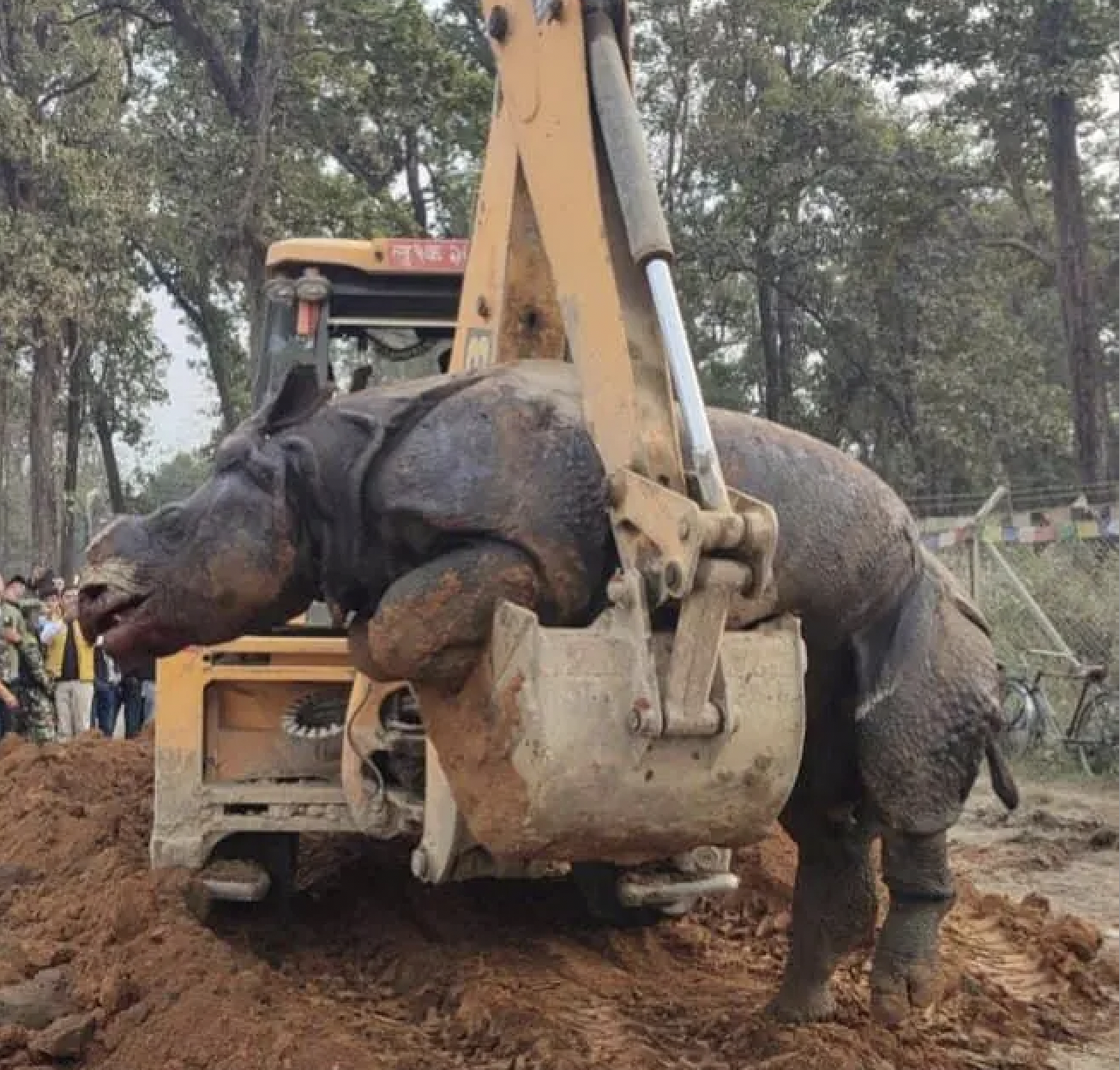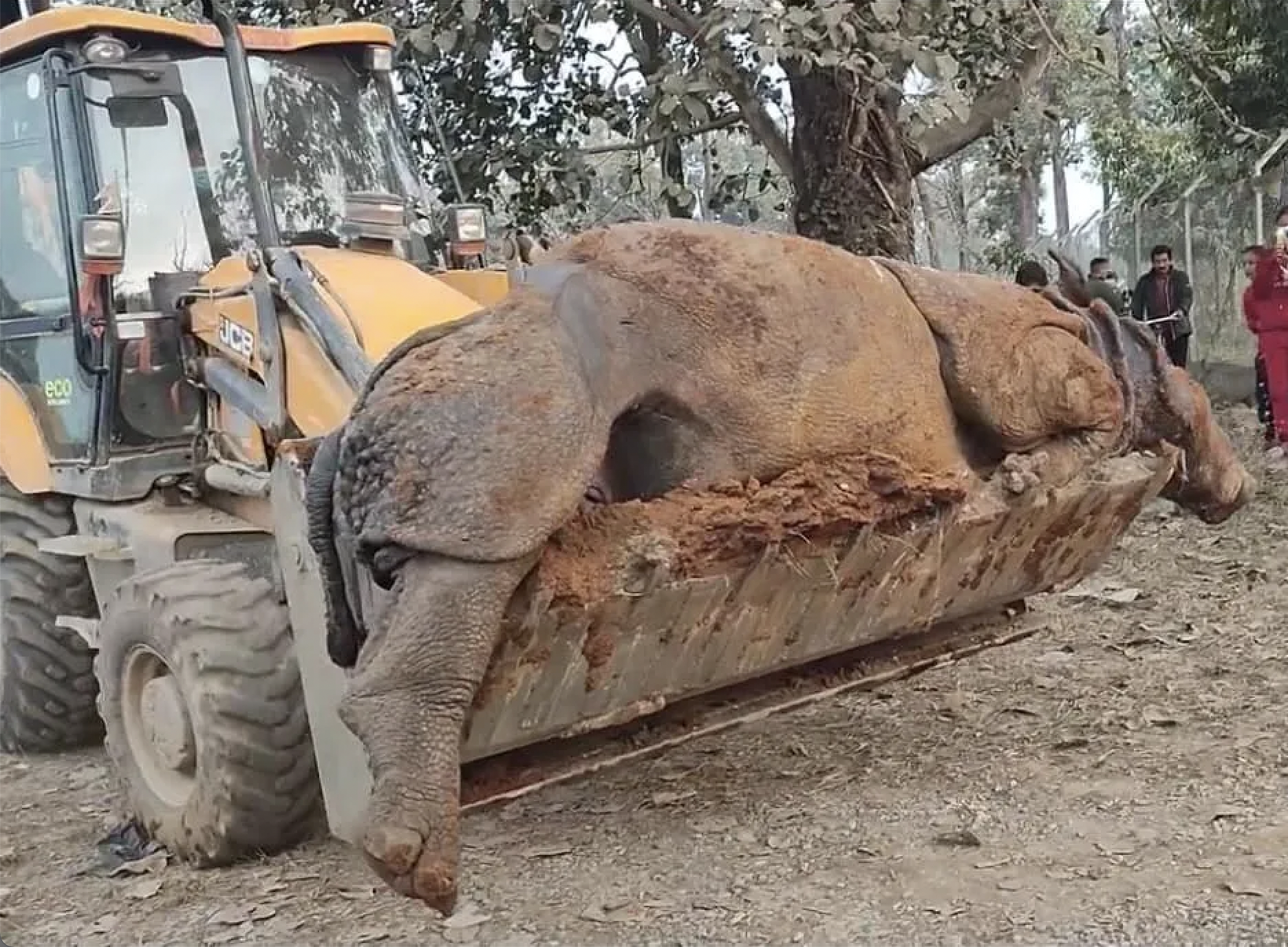Rhino Found Dead in Drainage Hole in Nepal
Two days ago, a rhino was found dead in a hole near Chitwan National Park, and the question everyone wants answers to is, could this have been avoided? Many reports claim that this was the direct result of negligence by the contract workers digging the drainage lines along the highway. I’ll give you the facts, then you decide for yourself.
photo: Reuters/Anil Dhakal
How did the rhino fall into the drain?
Infrastructure in Nepal is slowly improving, starting with implementing more complex drainage systems to prevent flooding during the heavy rain months. These drainage lines have slowly been dug along roads near the national park and, in their implementation, have been left wide open for days on end.
This greater one-horned rhino happened upon this ditch when crossing the highway at night, something this animal has probably done many times in its life. Only on the night of January 23rd, there was a ditch spanning the side of the highway that was large enough for it to fall into. With such large trenches being dug along streets known for being high-traffic wildlife crossings, an animal was bound to run into a problem sooner or later. Considering this region has the largest rhino population in the country, filling in large ditches promptly should go without saying.
After falling into the hole, the rhino died. It is unclear whether the 10-year-old female rhino died straight away from the fall or suffered through the night in the ditch. This unfortunate incident led to even more construction entering the zone to dig the rhino’s body out of the drainage line, followed by incredibly vocal backlash:
“The death of a rhinoceros in a road ditch while making a ditch in a place where animals are moving is the extreme negligence of the construction management.”
Said Nepal resident Berindra Johari on Twitter while sharing photos of the rhino being removed from the scene.
“…had the contractor filled the pit on time, the accident could have been averted… The government and the CNP are making money, but they don’t seem to think much about preserving the rare animals.”
Said Bhupendra Basnet, the former secretary-general of Nepal Forum for Environmental Journalists (NEFEJ).
Moving Forward with Infrastructure Development in Nepal
This cycle is bound to continue repeating itself due to the inefficiency of development paired with the quantity of endangered wildlife in the region. Although the area needs more infrastructure updates, there seems to be a problem in staffing, time management, and required resources to get the job done promptly.
Until this problem is addressed, either the updates to crucial systems like drainage must come to a halt, or we should expect to see more horrific incidences like the fate of this rhino. In a region that holds so much value in its abundance of wildlife, a middle ground must be found so that the people residing in the area can continue moving forward into modern development.
It’s unfair to say that modern infrastructure cannot come to the region to lift the communities; however, more care must be taken because of the sensitive positioning near the jungle. This will only be attainable once the conversation shifts from “wildlife vs. infrastructure” to “wildlife-friendly infrastructure.”
Growth is attainable, and wildlife safety and conservation must be at the forefront of these plans.



